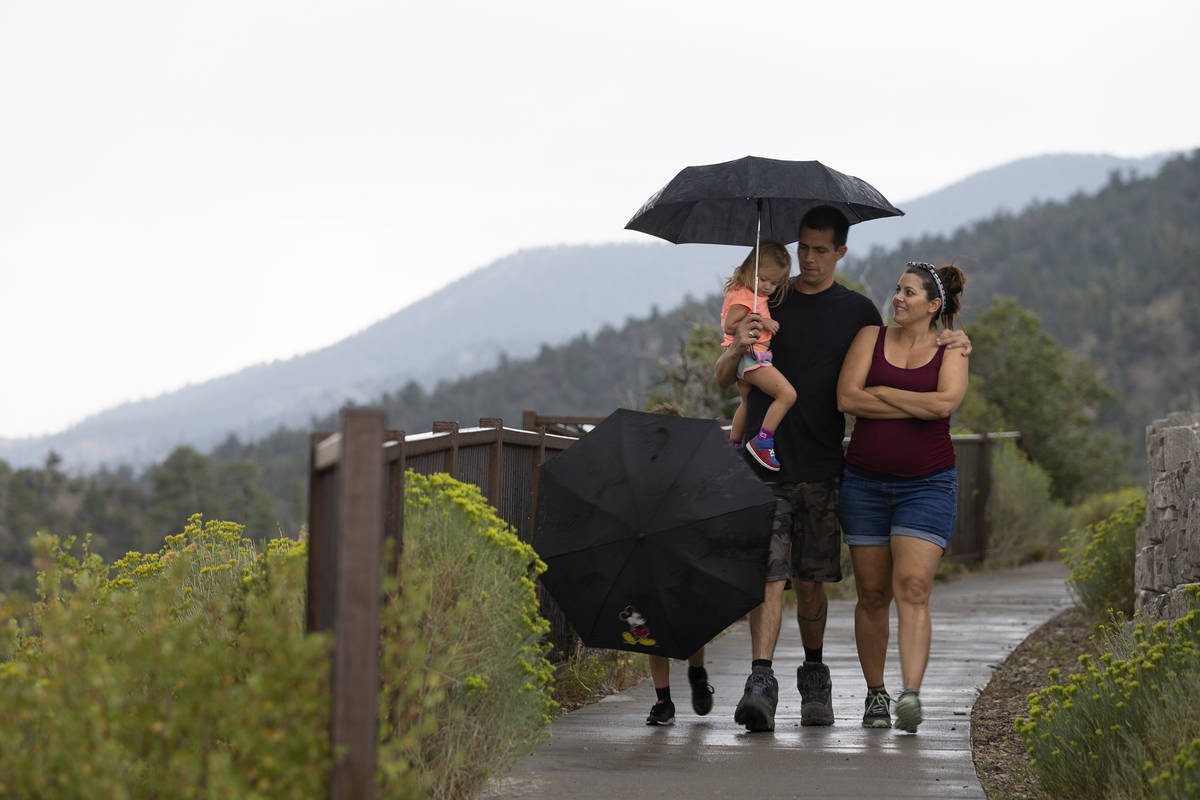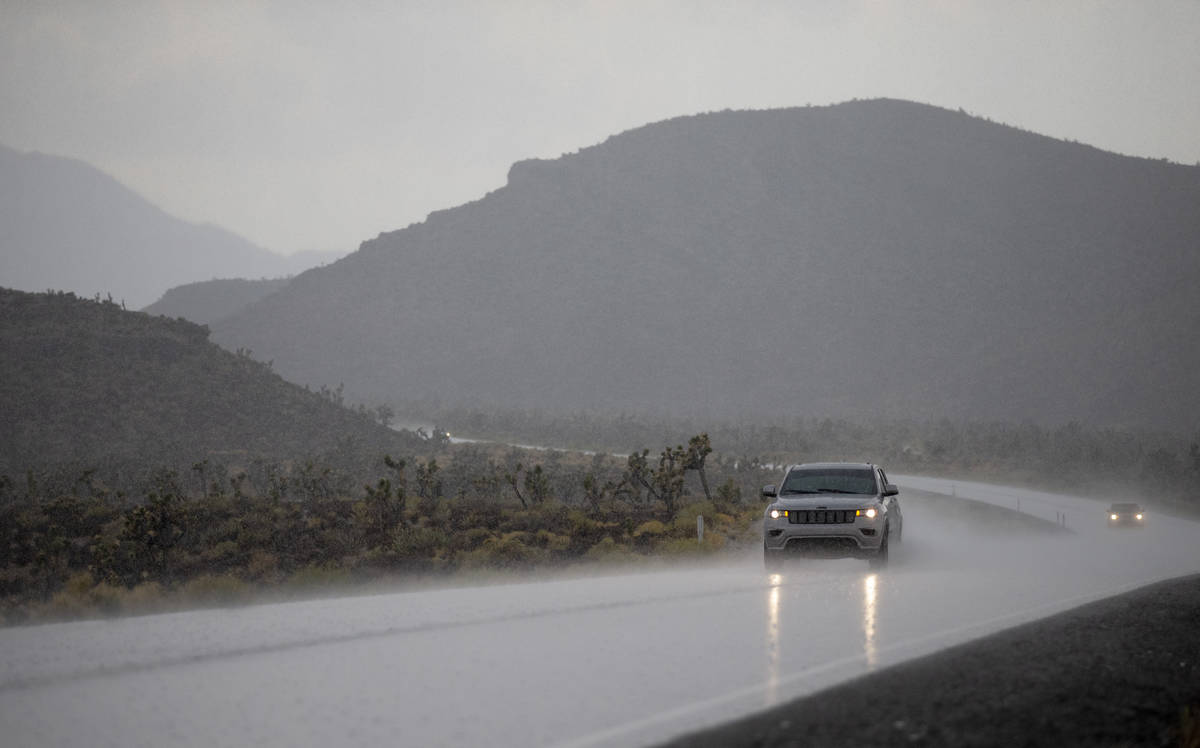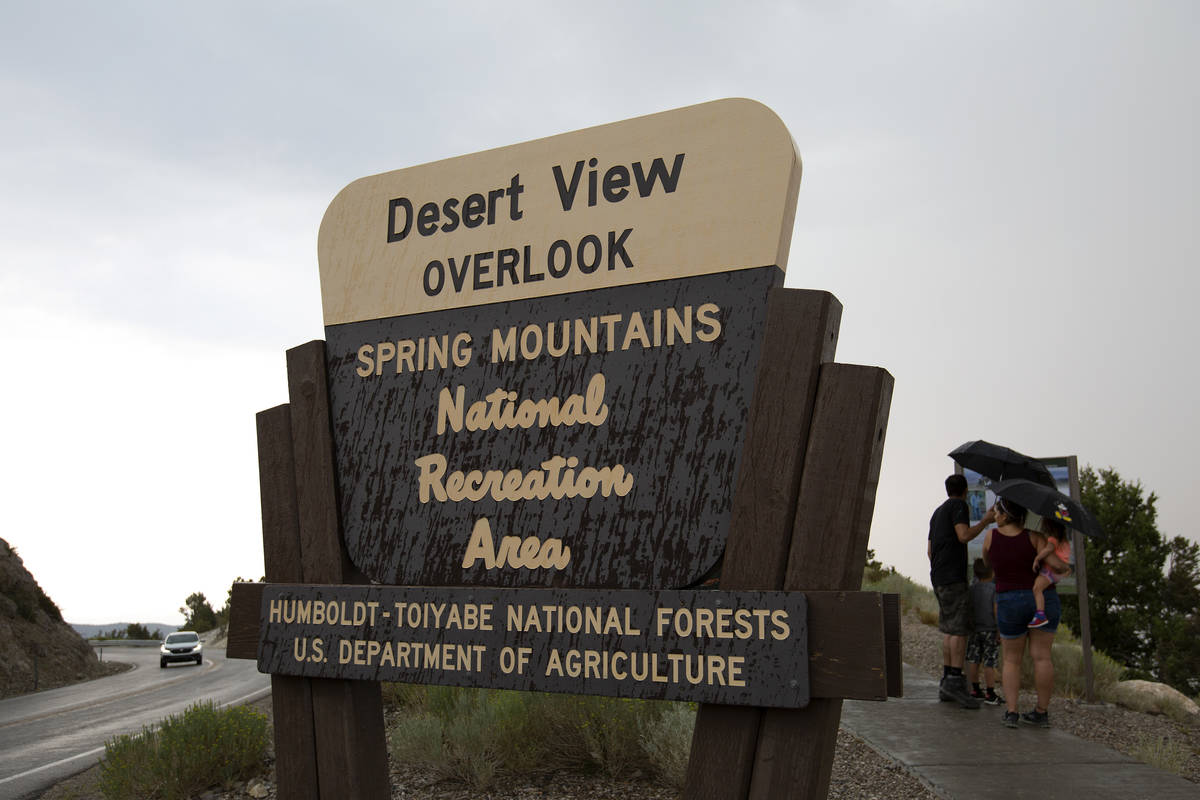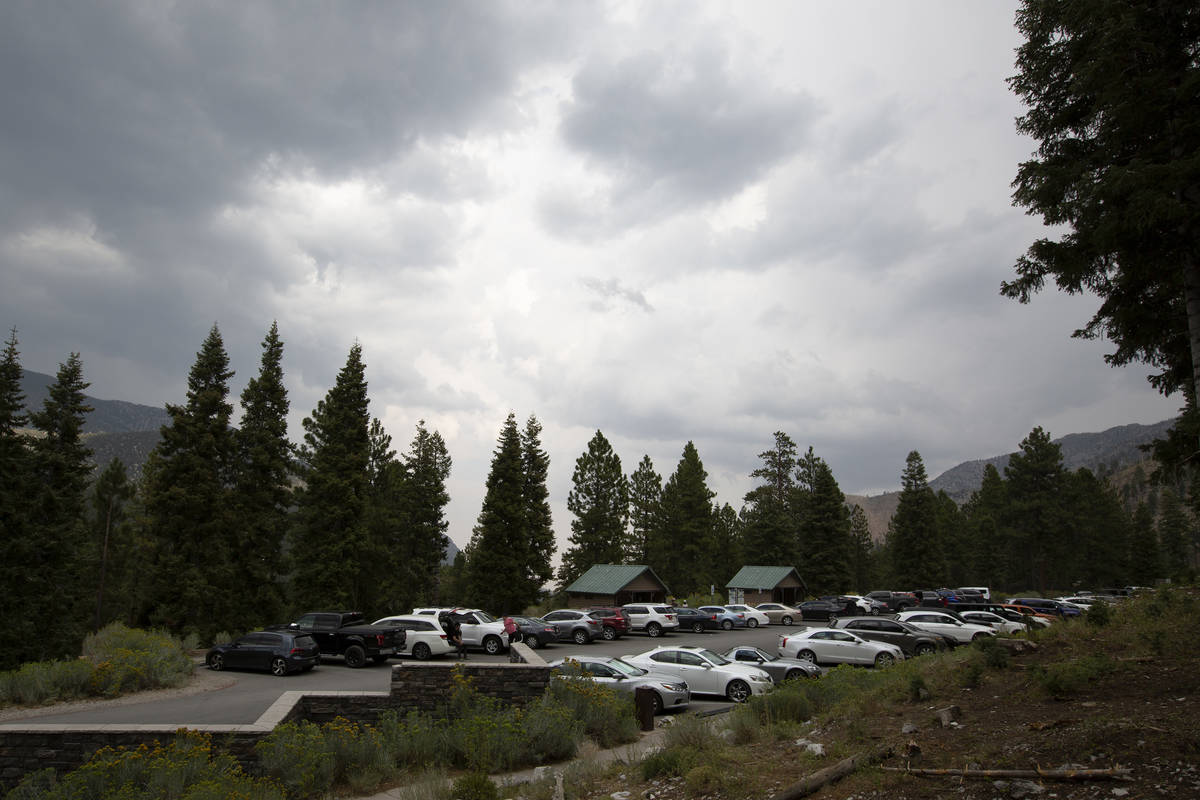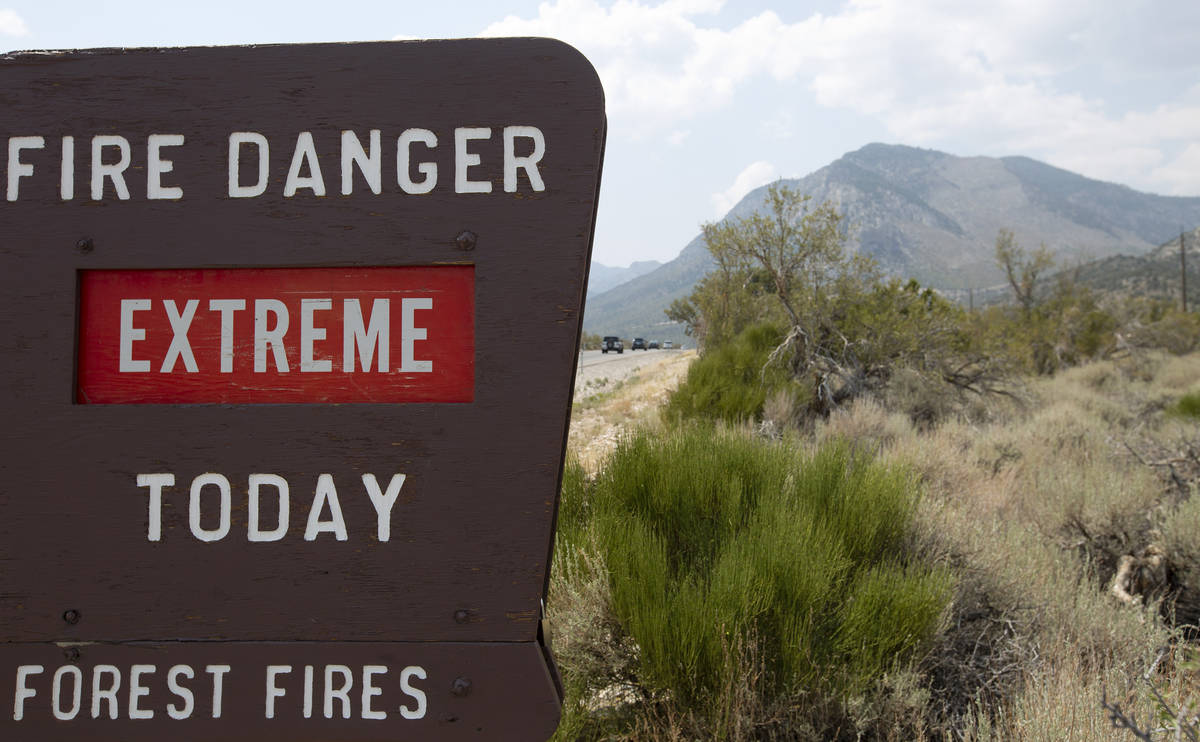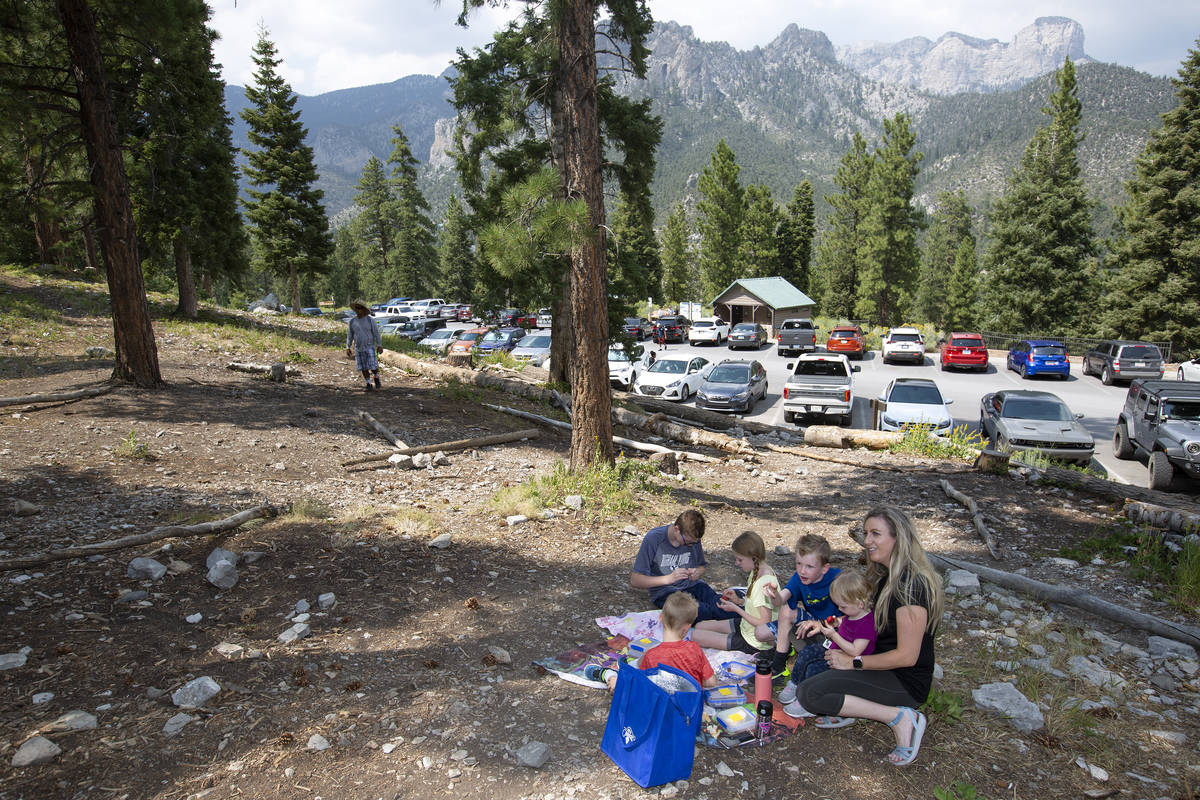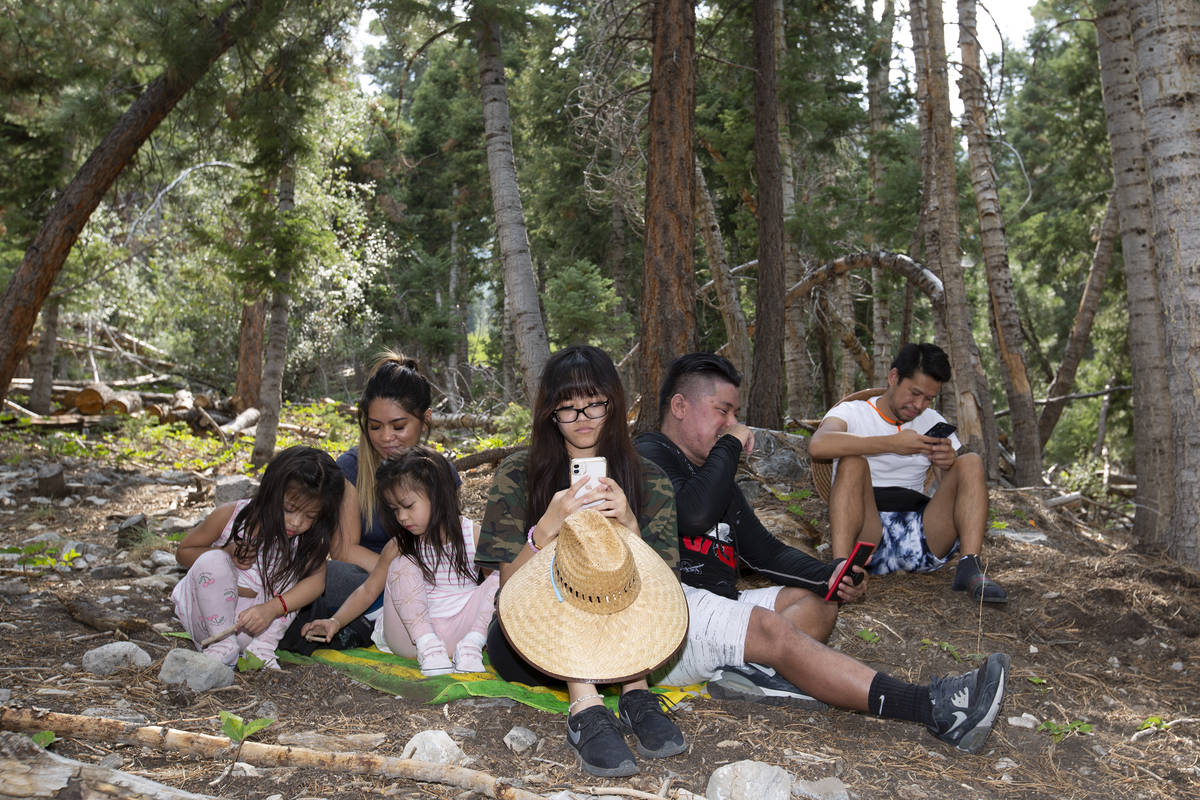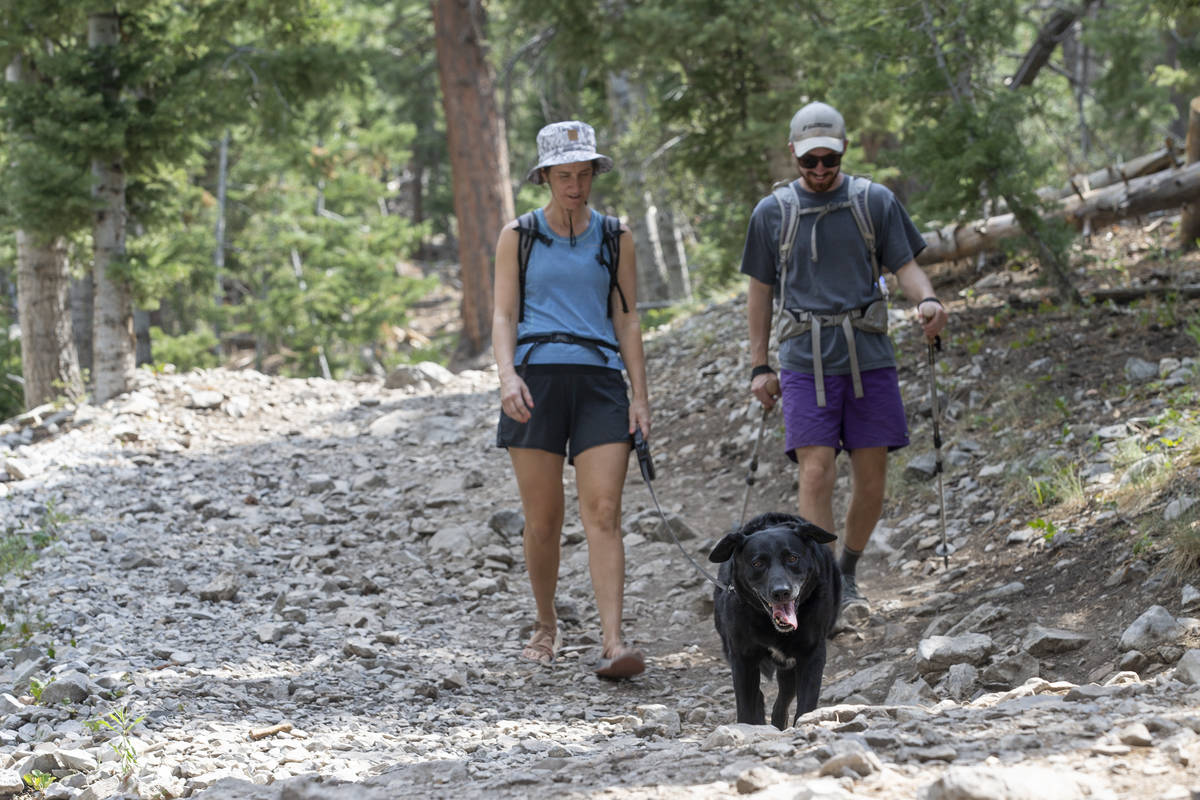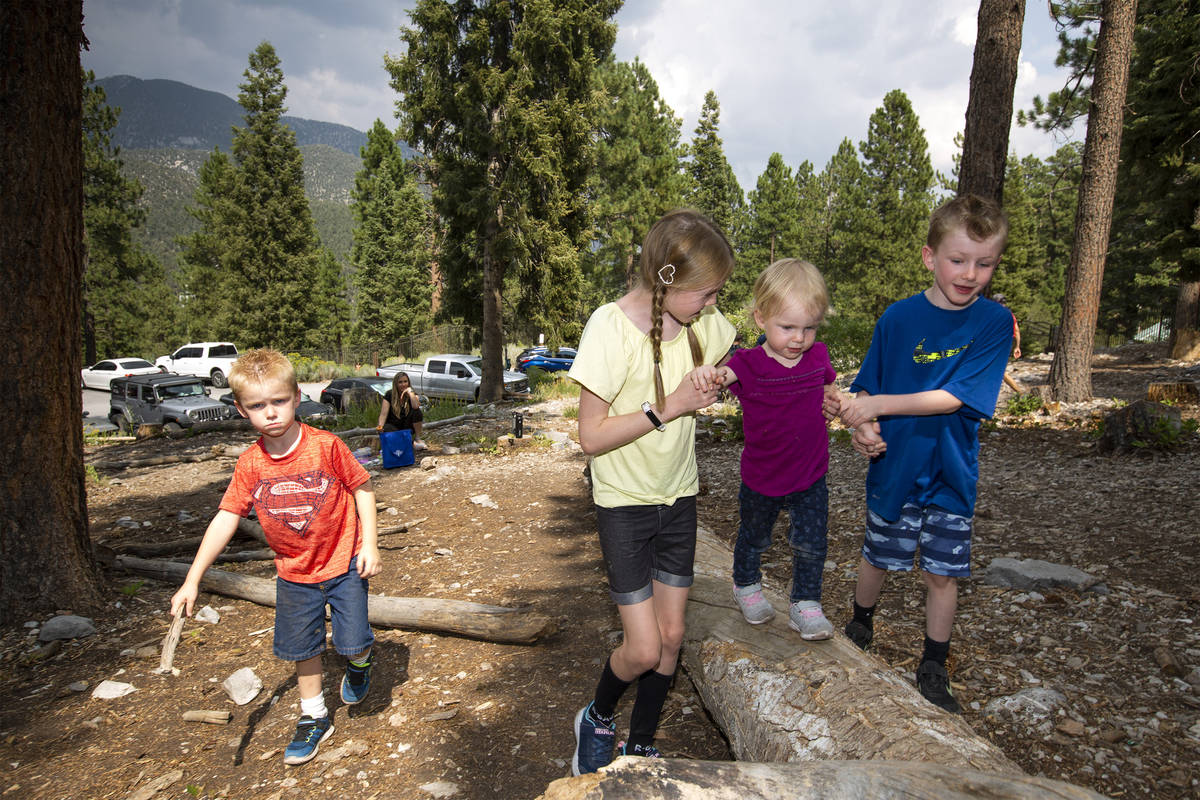Storms strike Mount Charleston area but skip Las Vegas Valley
Monsoonal moisture returned to the Las Vegas area on Saturday after what has been a record-breaking hot and dry August.
Thunderstorms produced some rain for Mount Charleston and the Spring Mountains.
The National Weather Service reported 2 inches of rain in Harris Springs Canyon and “heavier rainfall was indicated near Lee Canyon Road.”
The service also said “flash flooding or washes will be ongoing and will impact sections of Harris Springs Road and possibly sections of lower Kyle Canyon and Lee Canyon roads.”
The area had been affected by a flash flood warning, which expired at 7:15 p.m.
Earlier Saturday afternoon, the service said “between 1.5 and 2 inches of rain have fallen near Kyle Canyon and Lee Canyon Roads.”
Much of this rain will runoff into Kyle Cyn Detention Basin. Expect flood channels in NW @CityOfLasVegas and Las Vegas Wash to run swiftly this evening as the water eventually heads to Lake Mead. STAY OUT OF CHANNELS!
— Regional Flood (@RegionalFlood) August 22, 2020
Nerd Alert: 1.30 inches in 30 mins is 25-year intensity or a storm with a 4 percent chance of occurring. A 100-year storm has a 1 percent chance of happening.
— Regional Flood (@RegionalFlood) August 22, 2020
In late June, a wind-fueled wildfire, dubbed the Mahogany Fire, swept through Mount Charleston, claiming thousands of acres and sending up a plume of smoke that could be seen across the valley.
The weather service, in a tweet, had expressed concern about “potential debris flows from the Mahogany Burn Scar.”
Debris from the burn scar is unlikely to impact US-95, but use caution driving in any T-storms in this area. https://t.co/KKBPBi5JU6
— Regional Flood (@RegionalFlood) August 22, 2020
Also, the weather service reported golf ball-sized hail fell on Interstate 15 at Mountain Pass in eastern California, just across the Nevada border.
Another monsoon day in the books! We saw hail make I-15 near Mountain Pass look like a winter storm blew through, with the largest stones as big as golf balls. Storms around our area are winding down but chances for storms return for the area tomorrow. #nvwx #cawx #azwx pic.twitter.com/oPeRIfrEmj
— NWS Las Vegas (@NWSVegas) August 23, 2020
Heat, haze for valley
The mountains saw rain Saturday but the last measurable rain at McCarran International Airport was April 22.
On Wednesday, a few thunderstorms popped up across the valley.
The high at McCarran reached 111 on Friday, the 51st straight day with a high of 100 or higher. The record is 66 days in 1944. Friday was also the eighth straight day with a high at 110 or higher. The record is 10 days in 1961.
Widespread haze is forecast for Sunday with a high expected around 107. Winds will be light and variable.
Air quality advisory
The Clark County Department of Air Quality issued an air quality advisory through Sunday, saying effects of smoke from regional wildfires will put ozone quality in the Unhealthy for Sensitive Groups (USG) level and the air quality index will be moderate for particulates.
“While a return to breezy southwesterly afternoon winds will improve valley ventilation, we are continuing to monitor the fires causing the smoke impacts,” the advisory stated.
Smoke is made of small particles and other pollutants that can aggravate respiratory diseases and contribute to ground-level ozone formation. Exposure to ozone can induce coughing, wheezing and shortness of breath even in healthy people. A seasonal ozone advisory is in effect.
Forecast highs next week are around 107, about 5-6 degrees above normal.
Record August heat
Through Thursday, the average August temperature at McCarran was 95.7 degrees. That’s the daily highs and lows averaged out. The record for August is 94.4, set in 2018.
Contact Marvin Clemons at mclemons@reviewjournal.com. Follow @Marv_in_Vegas on Twitter.



